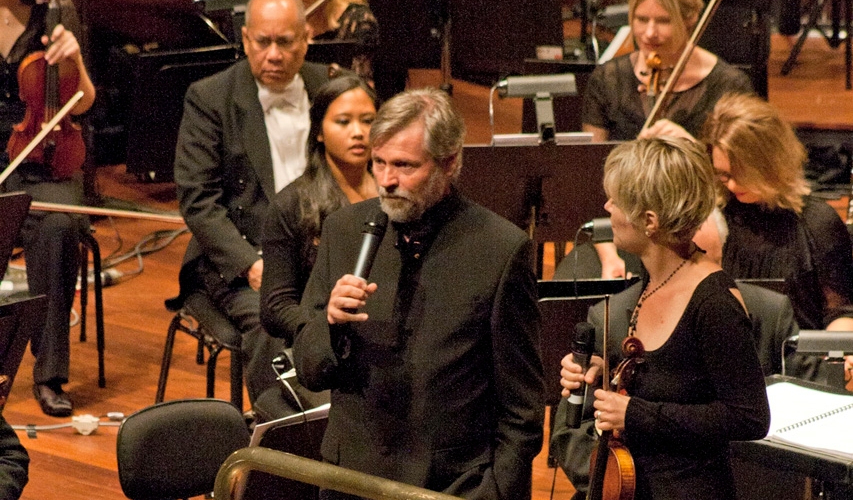The Orchestral Works of Ross Edwards

In honour of Ross Edwards’ forthcoming 80th birthday, we share a guide to some of Edwards’ key orchestral works, exploring the nuances of this unique voice in the landscape of Australian composition. We start with Edwards' symphonies which are exemplars of this inimitable Australian composer.
Symphony No 1 – Da Pacem Domine (1991) 29’
Unremittingly sombre, this monolithic single movement evolves slowly and organically over a deep, insistent rhythmic pulse. It is a massive orchestral chant of quiet intensity on feelings of grief and foreboding about some of the great threats to humanity: war, pestilence and environmental devastation.
Symphony No 2 – Earth Spirit Songs (1997) 21’
Written in three movements for solo soprano and orchestra, Edward’s second symphony draws on text from sources including Judith Wright and Hildegard of Bingen. Throughout, the work is dictated by the musical impulse, and the third movement is a sensual celebration of the miracle of spring, when the earth sweats life-giving sap through its pores to germinate fresh green growth.
Symphony No 3 – Mater Magna (2000) 25’
This symphony is a meditation on ecological re-balancing, symbolised by Mother Earth, the vital female force in nature. Highlighting the schism our society has inherited between matter and spirit, masculine and feminine, the work seeks to heal and restore the collective need for balance.
Symphony No 4 – Star Chant (2001) 33’
Star Chant evokes the glittery night sky display of the Simpson Desert. Star Chant is a musical fusion of art and science representing a journey through Australia’s night skies celebrating the stars in western and aboriginal culture.
Other than the symphonies, Edwards has gifted us with worthy concert openers for orchestra. Two examples are:
White Ghost Dancing (1999) 10’
The white ghost symbolises non-indigenous Australia’s innate Aboriginality and its capacity to transform and heal itself through connecting with the earth. The musical mosaic of shapes and patterns from the natural world consist of birdsong, insect and frog rhythms, as well as fleeting references to other works which fuse Aboriginal and Gregorian chant.
Ecstatic Dance (1990) 5’
Ecstatic Dance grew out of a flute duo from a garland of miniatures. The first dance makes use of the mediaeval European polyphonic device known as hocketing to interplay hypnotic insect sound patterns. After a melodic flowering it dissolves into a remote, nocturnal interlude. The second dance, radiant and insistently melodic, is often performed on its own.
Finally, and importantly, we turn to some examples of Edwards’ award-winning concertos:
Full Moon Dances: Concerto for Alto Saxophone and Orchestra (2011) 28’
This work unfolds in an unbroken sequence of five movements where a female soloist is proffered the role of universal Moon Goddess incarnate, source of plant life and protector of the environment, in which she performs a series of ritual healing ceremonies. Serene and mysterious, she nonetheless has power to unleash ecstasy and terror beyond the bounds of reason.
Maninyas: Concerto for Violin and Orchestra (1988) 26’
Maninyas is lush in its orchestral writing, flamboyant in the virtuosic solo part, and insistent in its rhythmic energy. The insect and bird sounds, lively tempi and rhythms, angular pentatonic melodies and simple drone-like harmonies represent the maninya style, with the central movement consisting of a violin cadenza and a slow, serenely elegiac chorale.
Frog and Star Cycle: Double Concerto for Alto Saxophone, Percussion and Orchestra (2015) 30’
A cycle of eleven large sections are unified by the related themes of renewal and wholeness. Fragments of the chant Ave Maris Stella are transformed together with a subtle dialogue of frogs, suggesting mystery, fragility and continuous evolution of life and the interconnectedness of all things.
(Dec 2022)
